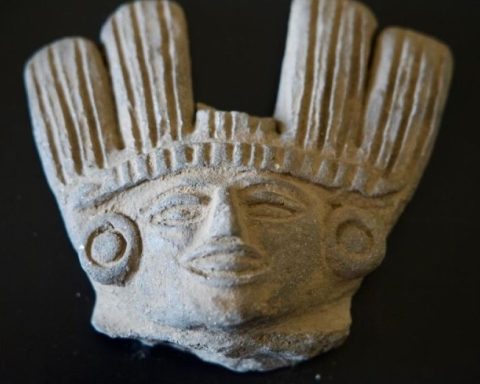L
The distance between Lázaro Cárdenas and Manzanillo, both on the Pacific Ocean, is 541 kilometers. The two most important Mexican ports are located in these two cities. The role that both play in the transit of goods in the region (and the world) is key. Imports from Asia arrive there. Exports destined for the west coast of the United States leave from them. Beer, sugar, copper, steel pipes, coal and resin are exported from Manzanillo, for example.
The Lázaro Cárdenas port can receive large vessels, large drafts and all types of cargo, including vessels with a displacement of up to 170 thousand tons. It is 18 meters deep. It is also the end point of the Salamanca-Lázaro Cárdenas oil pipeline, with a diameter of 36 inches.
In 2023, the Canadian Pacific and Kansas City Southern railroads merged into a single company: CPKC. They thus created the only railroad connecting Canada, the United States and Mexico. A key rail freight corridor was established connecting Lázaro Cárdenas and the Gulf of Mexico, and a privileged trading point with China. This multimodal rail corridor has 15 intermodal terminals.
It is not difficult to imagine the interests that seek to appropriate the routes that connect both ports. It is, of course, about controlling the rich natural resources that exist in those 541 kilometers, the paradisiacal beaches and the ecosystems nestled in that route and the routes for drug trafficking. But, also, about controlling a space that serves as a natural rearguard and space for growth for those two great development poles. Organized crime, mining companies, real estate companies and tourist developers (often mixed together) intend to take over those lands at any cost.
The cartels have their supply point in the two ports for the precursors that come from the east and that they need to manufacture chemical drugs, which they then transport to the United States. The huge transit of containers that leaves from there and crosses the border is one of the ways they use to move their merchandise. It is also the way to move other products in which the criminal and formal economy are mixed (from smuggling tires and the sale of iron to China, to clothing). brand
labeled in maquiladoras in Bajío).
On the road between these two ports, in Aquila, Michoacán, is the Nahua indigenous community of Santa María Ostula. Together with the other three Nahua communities in the municipality (Pómaro, El Coire and San Miguel Aquila), they own, under communal rule, more than 200 thousand hectares. They border the Pacific Ocean for 100 kilometers. The beautiful beaches located on their lands are very well preserved.
The communal lands of Ostula, protected by primary titles, are coveted by drug traffickers, mining companies, politicians and real estate companies. Through all means, legal and illegal, they have tried to dispossess the community members of their possession. For defending them, the peasants have paid a high price. Since July 26, 2008, 40 community members have been murdered and six have disappeared, including several of their most important leaders. The first victim was Professor Diego Ramírez, coordinator of the Commission for the Defense of Communal Lands. His dismembered body was thrown on the beach of Xayakalan. The murderers were never arrested.
Another of those killed was Pedro Leyva Martínez. In September 2011, at the third edition of the Andean-Mesoamerican Conference, he spoke. He explained: How our blood boils when we see so much plunder, and how it is necessary to say enough! to the trembling in our hearts. For us, the war is not over yet. We are still fighting those who have trampled on us. We have not let go of the rifle, we still have the rifle in our hands. We are still fighting, we are still defending ourselves.
On October 6, shortly after explaining the story of his struggle in Mexico City, he was murdered near the recovered territory of Xayakalan.
For now, a strip of more than a thousand hectares of communal land located along the Pacific Ocean that Santa María Ostula recovered in 2009 is in dispute. It is a fight that began when in 1964, after their ancestral lands were recognized by a presidential resolution, technical flaws in the plans allowed the small landowners of La Placita to invade the communal territory and divide it up. These invaders became members or allies of organized crime in the region: The Michoacan family and the Knights Templar.
The community continues to be harassed, both with weapons and through legal means. Just on July 3, the Jalisco Nueva Generación cartel (CJNG) attacked the town of La Cofradía de Ostula, with drones, explosives and high-caliber weapons (https://shorturl.at/GPJyK).
With justice rigged, the supposed small landowners of La Placita, linked to the criminals, managed to get the 38th District Unitary Agrarian Court, within the trial 78/2004, to rule in their favor, recognizing that their lands were in the immemorial possession of the community. This procedure was riddled with irregularities. Some time later, the Higher Agrarian Court confirmed the sentence.
This August, the Second Collegiate Court on Administrative and Labor Matters of the eleventh circuit (Morelia, Michoacán) will resolve the direct amparo trial 463/2023, through which the indigenous community of Santa María Ostula, municipality of Aquila, Michoacán, is challenging this resolution.
Zero hour is approaching for the indigenous community of Santa María Ostula. A terrible injustice could be committed against them. It must be prevented.
X: @lhan55













